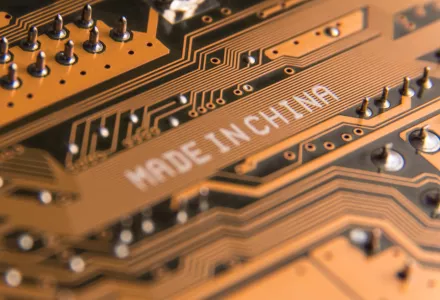The Great Tech Rivalry: China vs the U.S.
To take stock of the state of the technology race, this report examines the progress made by the U.S. and China in each key emerging technology over the past 20 years.
To take stock of the state of the technology race, this report examines the progress made by the U.S. and China in each key emerging technology over the past 20 years.

Download the Full Paper
To mark the arrival of the 21st century, in 1999 the National Academies of Science, Engineering, and Medicine offered an Olympian preview of the decades ahead. The Academy foresaw a world in which “yesterday’s science fiction [would] enter the marketplace: animal cloning, talking electronic road maps installed in automobiles, powerful computers as small as a pack of cigarettes.” Its Report declared that America’s “uniquely powerful system for creating new knowledge and putting it to work for everyone’s benefit” had been the primary engine of productivity growth in the 20th century and would likewise be the single largest determinant for the 21st century.1
Rereading that report today, the elephant in the room it missed was China. In the future the Academy’s National Research Council envisioned, China hardly mattered. Reflecting the conventional wisdom of the era, Time Magazine’s special issue Beyond 2000 asserted confidently: “China cannot grow into an industrial giant in the 21st century. Its population is too large and its gross domestic product too small.”2 With a per capita income at roughly the same level as Guyana and the Philippines, most Chinese did not have enough money to buy advanced technology products—let alone the resources to invent them.
By 2010, this picture was beginning to change. China had grown into a low-cost manufacturing site for multinational companies and was on its way to becoming the manufacturing workshop of the world for mass market goods. But according to the dominant school of thought at the time, as noted by China scholar William Kirby in the Harvard Business Review, many believed “China [was] largely a land of rule-bound rote learners” that could only imitate, not innovate.3 Advances in information technology could only be made in free societies by free thinkers, not under an authoritarian regime behind a firewall, the logic went. So rampant were the issues of copycat software and shanzhai electronics in China that Microsoft famously abandoned its efforts to stem pirated copies of Windows.4
Today, China’s rapid rise to challenge U.S. dominance of technology’s commanding heights has captured America’s attention. The rivalry in technology is what the Director of the Central Intelligence Agency, Bill Burns, spotlights as the “main arena for competition and rivalry with China.”5 It has displaced the U.S. as the world’s top high-tech manufacturer, producing 250 million computers, 25 million automobiles, and 1.5 billion smartphones in 2020.6 Beyond becoming a manufacturing powerhouse, China has become a serious competitor in the foundational technologies of the 21st century: artificial intelligence (AI), 5G, quantum information science (QIS), semiconductors, biotechnology, and green energy.7 In some races, it has already become No. 1. In others, on current trajectories, it will overtake the U.S. within the next decade.
President Xi Jinping has declared, “Technological innovation has become the main battleground of the global playing field, and competition for tech dominance will grow unprecedentedly fierce.”8 Emphasizing the need to “develop indigenous capabilities, decrease dependence on foreign technology, and advance emerging technologies,” the Chinese government’s most recent Five-Year Plan identifies key performance indicators, sets deadlines for outcomes, and holds provincial and local governments accountable for delivering results.9
One of America’s most respected leaders in advancing and applying technology, Eric Schmidt, who led Google to become one of the world’s leading technology companies, has been candid about his views. Noting that “many Americans still have an outdated vision of China,” he believes “the United States now faces an economic and military competitor in China that is aggressively trying to close our lead in emerging technologies.”10 In his assessment: “Unless these trends change, in the 2030s we will be competing with a country that has a bigger economy, more research and development investments, better research, wider deployment of new technologies, and stronger computing infrastructure.”11
To take stock of the state of the technology race, this report examines the progress made by the U.S. and China in each key technology over the past 20 years.
To begin with our bottom lines up front:
Allison, Graham, Kevin Klyman, Karina Barbesino and Hugo Yen. “The Great Tech Rivalry: China vs the U.S..” Belfer Center for Science and International Affairs, Harvard Kennedy School, December 7, 2021